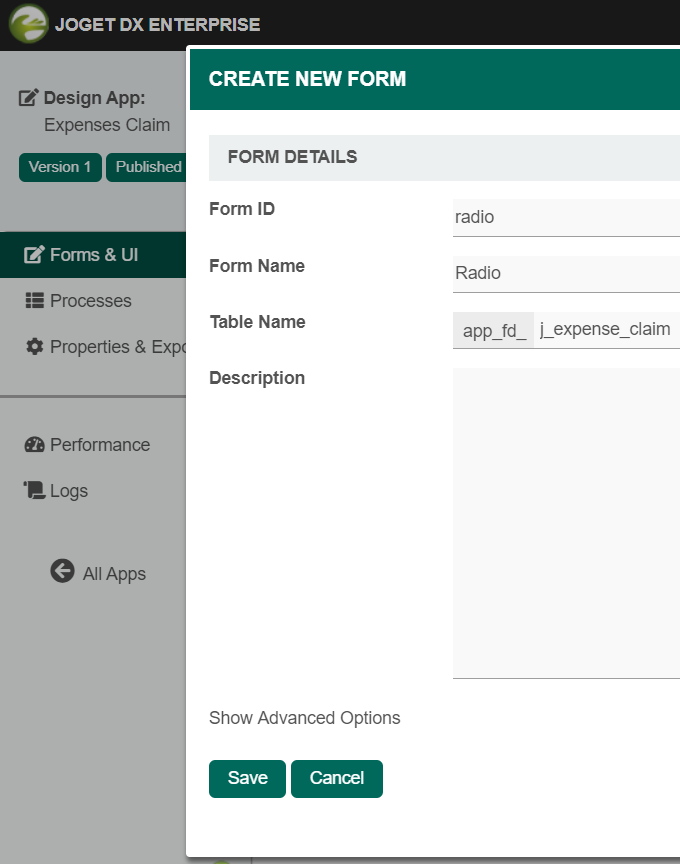...
The easiest way to see how the Radio button works are to use the existing built-in App Expenses Claims. Here are the steps:
...
- Start the Joget Server and open the App Center.
- Log in as admin and click on the pencil icon on the Expenses Claim to open the Design App. (see Figure 1)
Figure 1 - Click on the Create New Form button and fill up the Form Details as follows (see Figure 2):
- Form ID: radio
- Form Name: Radio
- Table Name: j_expense_claim
Figure 2 - Drag and drop a Radio element on to the canvas.
- Hover the mouse over the Radio element on the canvas and click on Edit to open up the Edit Radio properties.
Fill up the following fields as follows and click on OK (see Figure 3):
- ID: type
Options (Hardcoded):
Default Value
Label
Local Local International International
Figure 3
- Click on Preview, click on the options available.
...
Figure 1
...
Figure 3
Radio Properties
Edit Radio
| Name | Description | Screen (Click to view) | |
| ID | Element ID (By declaring as "type", a corresponding database table column "c_type" will be created) Please see Form Element for more information about defining the ID and list of reserved IDs. | ||
| Label | Element Label to be displayed to the end-user. | ||
| Options (Hardcoded) | Select Box options
| ||
| Or Choose Options Binder | Radio options to be populated using the Options Binder plugin. |
Advanced Options
Data
| Name | Description | Screen (Click to view)||||||||
|---|---|---|---|---|---|---|---|---|---|
| Value | Default Value when there's no existing value found/selected. A hash variable is accepted here. For example, you may key the following
to pre-populate the field with currently logged in user's name. You may define multiple default options by separating them using semicolons.
| ||||||||
| Validator | Attach a Validator plugin to validate the input value.
|
Dependency
| Name | Description | Screen (Click to view) |
|---|---|---|
| Field ID to control available options based on Grouping | Dynamically change the available options based on the "grouping" attribute defined in the options by matching the current value of the element ID defined. |
UI
| Name | Description | Screen (Click to view) |
|---|---|---|
| Readonly | Determines if the element is editable. | |
| Display field as Label when readonly? | Displays the value of the element as plain text when an element is set to "Readonly". |
Workflow
| Name | Description | Screen (Click to view) | ||||||
|---|---|---|---|---|---|---|---|---|
| Workflow Variable | If the form is part of a workflow process, upon saving of the form (by clicking on "Save as Draft" or "Complete" button). The value in this input field will be saved into the corresponding workflow variable named here.
|














